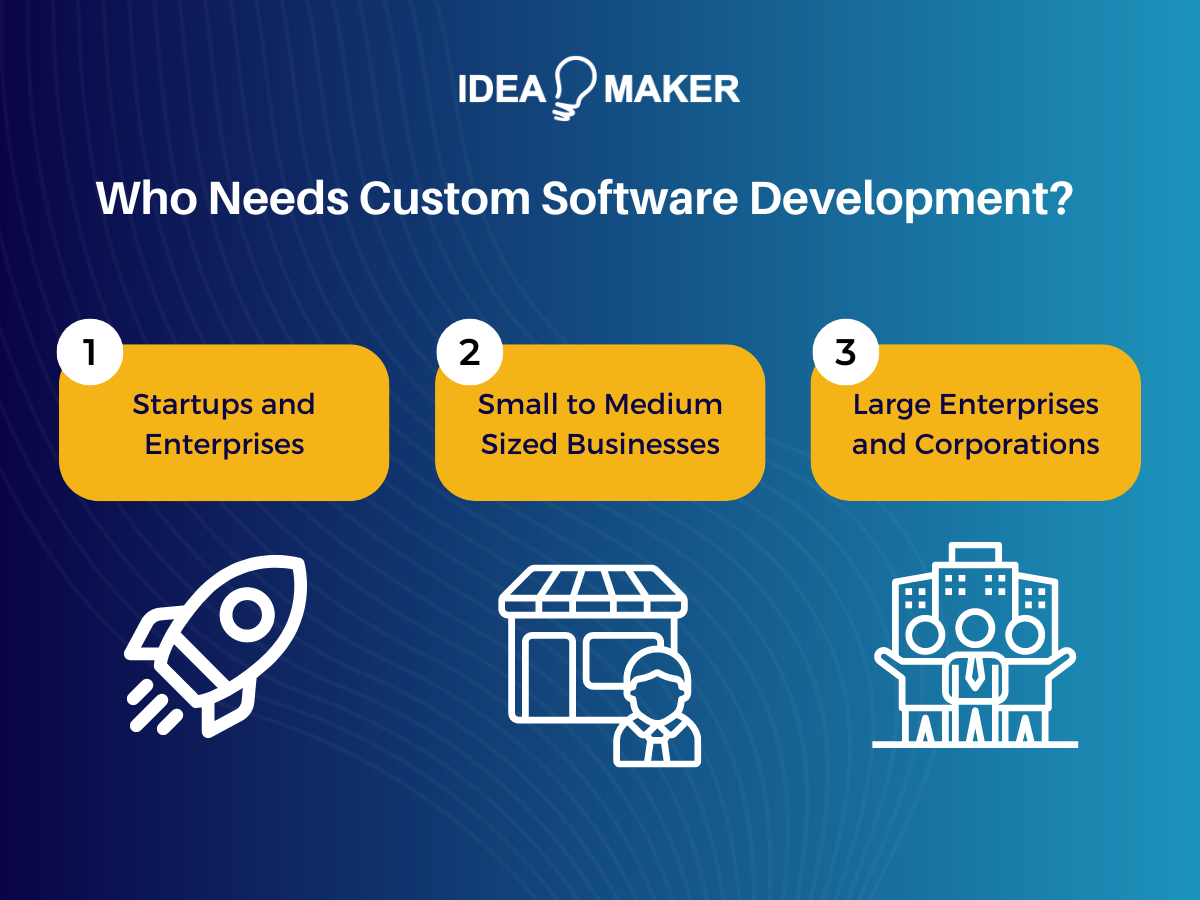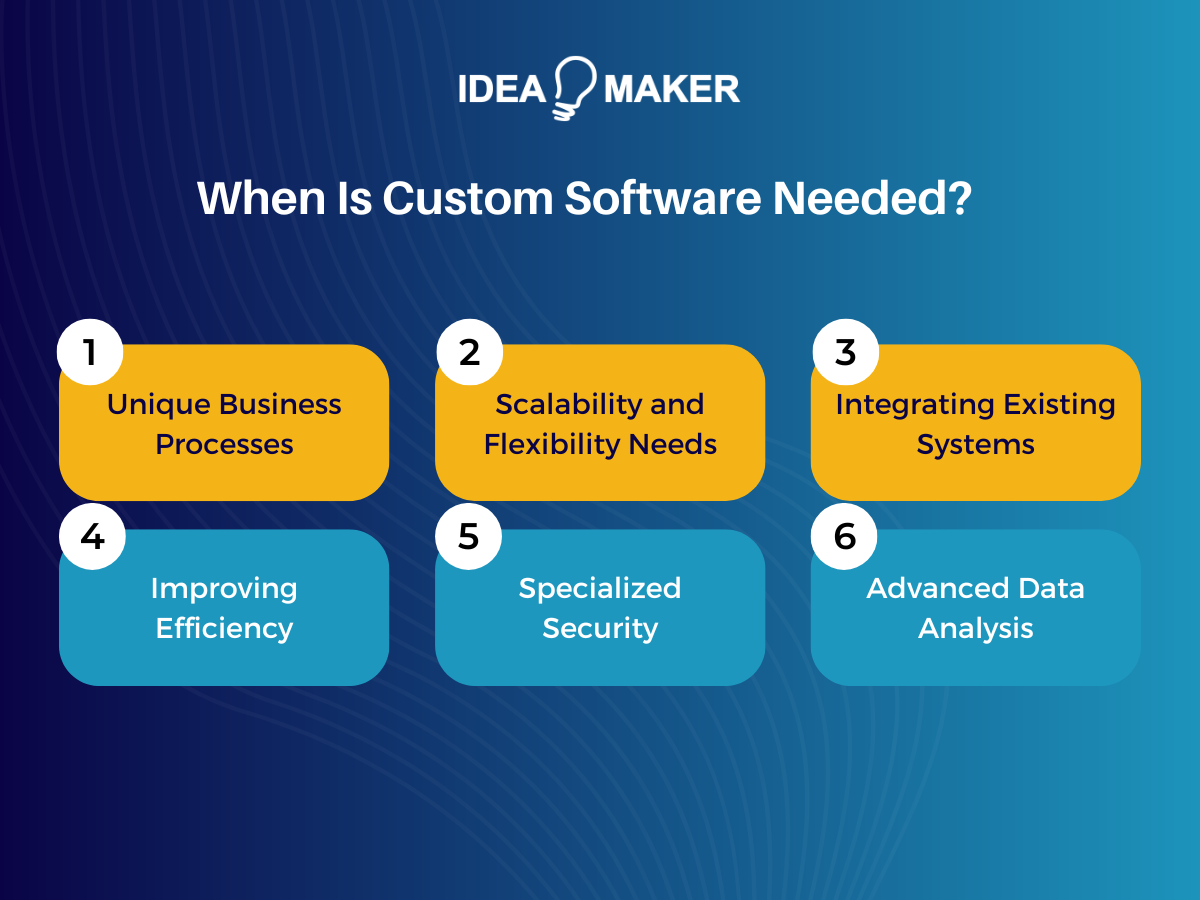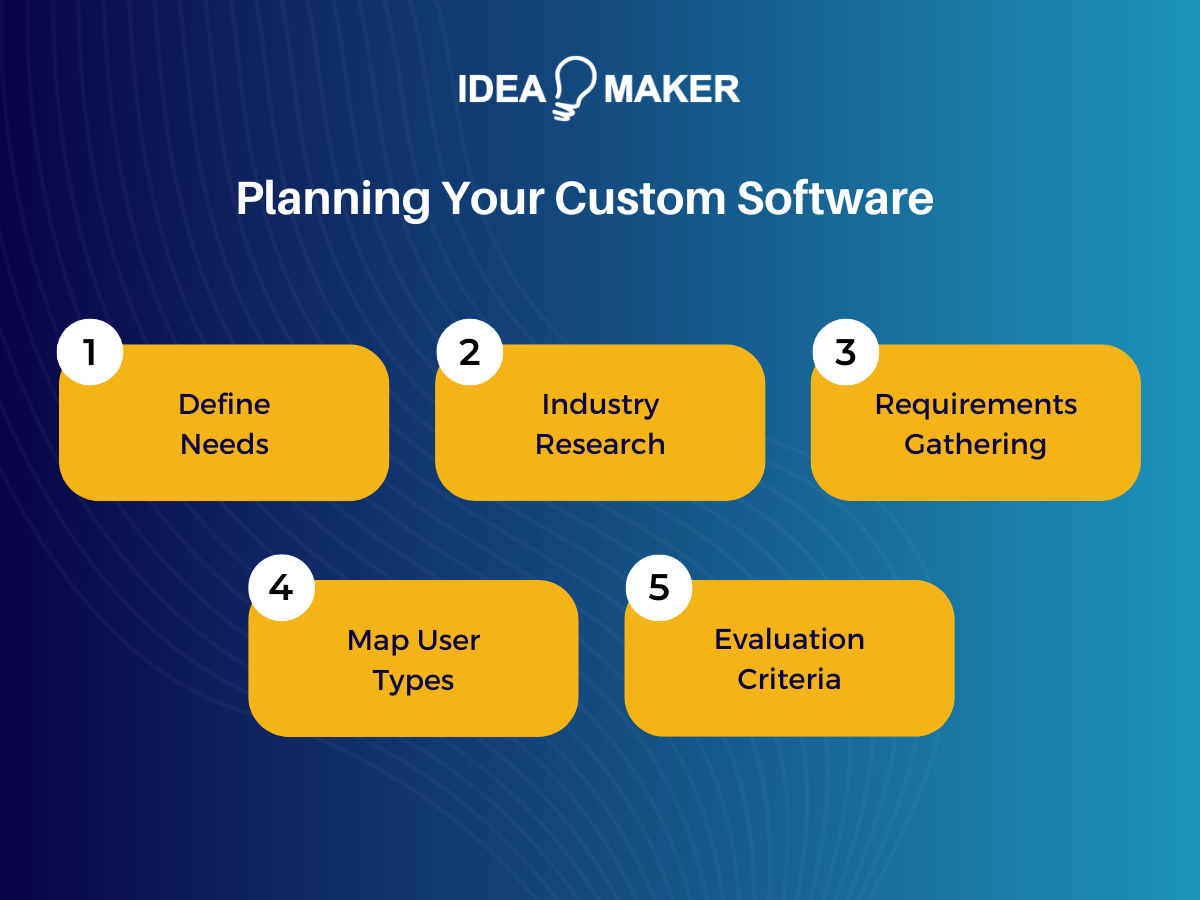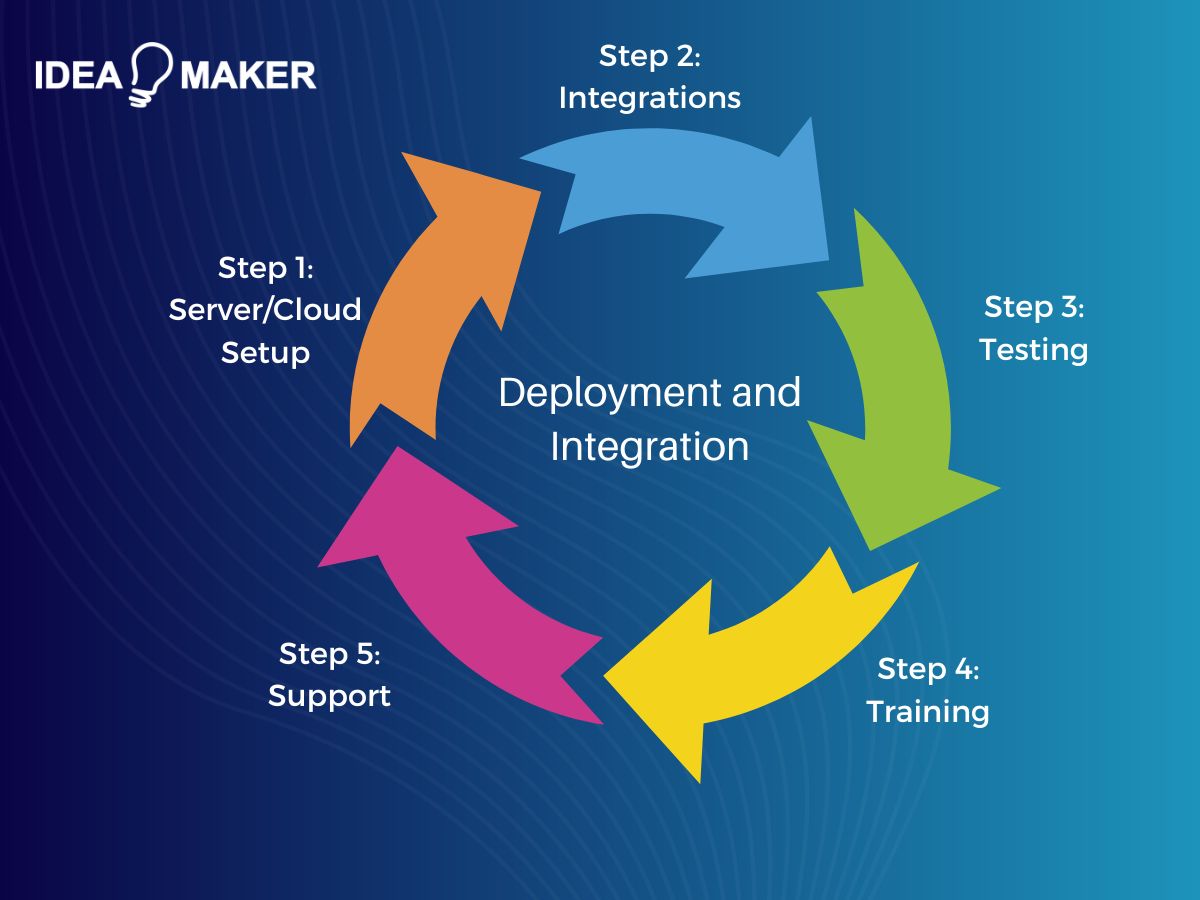Custom software development is a lucrative investment for any business looking to solve a specific operational or workflow challenge. This is because, unlike off-the-shelf software programs that provide generalized functionality, custom software is designed from scratch to address the unique needs and goals of your organization.
Whether you’re a startup seeking to launch an innovative product idea or a large enterprise needing to optimize complex systems, custom software provides the opportunity to create truly transformative business applications. However, embarking on custom software development also requires careful planning, strategic decision making, and thorough understanding of the development life cycle.
Fortunately, in this comprehensive guide, we’ll walk you through everything you need to know about custom software development, from planning the project’s requirements and assembling a team to deploying the application and measuring its ROI. After reading this, you should be well poised to develop a custom solution that will enhance your operations and improve your overall efficiency.
Table of Contents
What Is Custom Software Development?
Custom software development refers to the designing and building of software applications to meet specific business requirements. While off-the-shelf software programs offer a one-size-fits-all approach, custom software is specifically tailored to address a company’s unique workflows, processes, and objectives.
This offers businesses numerous benefits, including streamlined operations, increased productivity, and improved decision making. According to IBM, successful modernization through custom software can also boost annual revenue by 14% and decrease application maintenance and running costs by up to 50%.
Another significant advantage of custom software is that it enables seamless integration between programs and datasets across an organization. For example, a Microsoft survey found that 64% of respondents said their collaboration tools don’t integrate with organizational processes, while 72% wished the tools were more compatible to facilitate cross-team work. Custom development solves these issues by bridging siloed systems and promoting enterprise-wide visibility.
Custom Software vs. Off-the-Shelf Software
Because it’s tailored to your specific business needs, custom software offers flexibility, scalability, and a potential competitive advantage. It can also integrate better with your existing systems. Taking a custom approach to development, however, does come with some disadvantages, such as higher upfront costs, longer development times, and a dependence on the development team. Maintenance and updates typically require additional resources, as well.
On the other hand, off-the-shelf software offers lower upfront costs, faster implementation, proven functionality, and regular updates and support. The downside here is these products will never perfectly align with all your business requirements. In addition to limited customization options, the other major drawbacks of purchasing an off-the-shelf solution include feature bloat and dependence on the software vendor.
As you can see, there are pros and cons to both software types. To better understand these nuances, read our in-depth comparison guide: Custom Software vs. Off-the-Shelf Software.
Who Needs Custom Software Development?
Custom software development can provide immense strategic value for organizations across industries. However, carefully evaluating your needs and objectives is crucial in order to properly determine which software approach to take. Generally speaking, there are a few business segments that tend to benefit the most from investing in custom systems.
Startups and Entrepreneurs
Startups and entrepreneurs looking to develop unique digital products require custom software to bring their innovative ideas to life. By tailoring the technology to their exact product specifications and business processes, startups can disrupt industries and gain strategic first-mover advantage.
Small to Medium-Sized Businesses
Small to medium-sized businesses (SMBs) aiming to expand require the workflow optimization and productivity enhancements provided by custom systems in order to scale efficiently. This is because, with custom software, SMBs can eliminate process bottlenecks and ultimately position themselves for the next stage of growth.
Large Enterprises and Corporations
Large enterprises and corporations need tailored software to address complex legacy systems and data challenges as they pursue new markets and opportunities. Custom development allows them to consolidate disparate data sets and achieve enterprise-wide visibility. It also enables data-driven decision making through customized analytics and reporting.
When Is Custom Software Needed?
Along with the business types outlined above, there are also several specific situations that typically require custom systems rather than a configurable off-the-shelf product. Fully understanding these scenarios is the key to choosing the best software type for your business.
-
Unique Business Processes
If your organizational workflows, operations, and procedures are distinctly different from industry competitors and norms, off-the-shelf software may not map well. This is because these solutions only provide generic functionality, catering to broad use cases that likely don’t address all your unique needs.
Custom software development, however, enables you to tailor your solution to your exact business processes and optimize your workflows for maximum efficiency. In other words, with custom software, you can incorporate domain-specific business logic, analytics, data handling, and automation capabilities, ultimately ensuring a competitive edge.
-
Scaling and Flexibility Needs
When your company is poised for rapid expansion or venturing into untapped domestic and global markets, it is crucial to have a software foundation capable of seamlessly accommodating this growth. While off-the-shelf software adds constraints due to limited customization and control, custom systems allow you to build your application to your current and projected future needs.
This means that, as your business volumes, transactions, data generation, and user base grows, your custom software can scale up, seamlessly meeting new demands. Custom software also provides a high level of flexibility, enabling you to make swift implementations and adaptations in sync with evolving business priorities.
-
Integrating Existing Systems
Legacy enterprises often have many disjointed systems built up over decades handling different processes, datasets, and workflows. Disparate CRM, ERP, supply chain, analytics, and other niche platforms may not interoperate, creating information silos and preventing enterprise-wide visibility.
Custom software development, however, provides an opportunity to seamlessly integrate such legacy systems. With APIs and data pipelines bridging once-siloed systems, custom solutions ensure unified data access, governance, and analytics across all company programs.
-
Improving Efficiency
When a company depends on legacy software systems and labor-intensive manual workflows for essential operations, teams can get bogged down from performing high-effort repetitive tasks, limiting production capacity. Developing new custom automated software solutions resolves this by optimizing such processes way beyond manual methods.
For instance, with tailored databases, intelligent algorithms, and streamlined interfaces, your business can dramatically boost productivity metrics like sales conversions, client cases processed, service delivery throughput, and manufacturing output. This improved workflow efficiency ultimately leads to higher revenues and profit margins.
-
Specialized Security
Businesses handling sensitive information, such as financial records, medical data, personal identification, or proprietary knowledge, must implement robust security measures to safeguard this valuable data. While off-the-shelf security software only provides generalized protections, custom software can be tailored to your specific regulatory compliance and data governance needs.
It also allows integrating authentication, access control, and cybersecurity modules directly into your other custom software. This creates a seamless protective infrastructure, securing sensitive data flows and transactions across custom systems.
-
Advanced Data Analysis
For businesses aiming to become more insights-driven, custom analytics and reporting software is essential. This is because, unlike off-the-shelf solutions, custom software helps you better visualize your company data, help spot trends, predict outcomes, and support strategic decisions unique to your business.
Examples of Custom Software
Thanks to the many benefits of bespoke software, custom systems can be developed for organizations across sectors. Here are just a few examples of the impact these solutions can have on various business types:
- A large fast food chain can create custom mobile ordering apps and self-service kiosks tailored to their unique menu, ingredients, and order fulfillment processes. This would provide customers with an additional layer of convenience while driving higher revenue and throughput.
- A startup fintech firm can develop a peer-to-peer payment app with tailored security protocols and identity verification processes, ensuring data privacy. Integration to internal banking systems could also be included to support the company’s market disruption plans.
- A regional hospital group can develop a custom telehealth platform that integrates medical records, prescription information, and billing systems to streamline and enhance patient care. It could also provide specialized data security as per HIPAA regulations, while enabling scalability across departments.
- A national retailer could create a custom inventory management system tied to each store location’s sales data, increasing companywide efficiency. In addition to providing real-time data analytics, the system could also optimize stock reordering and fulfillment workflows in their supply chain to prevent potential stockouts.
- An industrial manufacturer could develop a custom Internet of Things (IoT) system that consolidates data from sensors across factory equipment. It could enable predictive maintenance, remote monitoring, and data-driven decisions, enhancing the company’s overall operations.
These examples highlight how custom software provides strategic, operational, and technology advantages that off-the-shelf solutions simply cannot match. As a result, by taking a tailored approach to software development, your organization can enjoy increased efficiency, higher growth, and competitive differentiation.
Planning Your Custom Software
Embarking on a custom software project is a major strategic decision that requires extensive upfront planning in terms of requirements, budget, and timelines. It also involves carefully assembling skilled technical teams. Consequently, in order to avoid project delays, cost overruns, and inadequate solutions, it’s essential to take the time to complete a few basic steps before investing in custom development.
Define Needs
A good way to start planning your custom software project is by clearly defining the problems you want to solve or objectives you want to achieve through the system. Rather than starting with a vague idea, such as automating certain processes, your aim should be to uncover the root causes of current inefficiencies.
For this, it’s important to be as specific as possible, outlining the biggest pain points with your existing workflows and legacy systems that hinder your team’s productivity. You will then need to quantify their tangible impacts like delays, errors, and revenue losses where possible.
From there, you can begin collaborating with departmental stakeholders in initial working sessions to drill down to the core software goals that would alleviate these issues. This upfront clarity on the existing gaps and desired outcomes will drive the system requirements and design process, ensuring the final product directly addresses real needs.
Industry Research
Once the internal business needs and software goals are well defined, the next step is to extensively research your industry niche. This will involve thoroughly examining case studies of successful custom platforms in your market segment, identifying any innovative features and capabilities that could inform your own software plans.
For example, by analyzing workflows, user experience, security protocols, and use of emerging technologies, you can gain a better understanding of how custom systems can boost efficiency, insights, and growth. Comparing current industry solution standards for metrics like workflow throughput, cost savings, and revenue expansion will also help you set tangible performance targets.
Requirements Gathering
After conducting extensive market research and identifying best practices tailored to your niche, you can move on to identifying your project’s requirements. This will consist of engaging with all major user groups and stakeholders through workshops, interviews, and data analysis to determine detailed specifications that the new software must fulfill.
Requirements, such as functional features, system architecture, UI/UX preferences, and integration with existing systems, are then consolidated into a detailed document, which will serve as the blueprint for the software’s development. These precise specifications ensure the development team has sufficient clarity and coverage on expected capabilities prior to programming, and also helps evaluate the software’s quality during the testing stage.
Map User Types
While gathering your requirements, it’s important to also develop detailed personas representing the different types of users who will access the new system. This entails outlining various user categories based on their roles, expertise levels, software module and data access needs, and use cases.
A custom platform for a hospital, for example, might have personas for nurses, lab technicians, billing staff, administrators, and each doctor specialty. These personas can then be used to map out user journeys, ensuring optimized workflows, interfaces, and access control across software modules for their specific work needs.
In other words, by undertaking robust user mapping, developers can build intuitive, tailored experiences catered to each persona type’s use case, capabilities, and permissions. It also helps identify necessary training interventions that can facilitate seamless adoption across expertise levels.
Evaluation Criteria
Before kicking off software development, it’s vital to first establish a comprehensive framework for evaluating and selecting your technology partner. This entails identifying key characteristics of your desired development team to help reduce selection bias and ensure an objective basis for comparing multiple vendor proposals.
For instance, you may determine that you’d like to work with a vendor that has relevant industry experience, expertise in high-priority technologies like AI, and cultural alignment with your organization. Outlining such precise, multidimensional criteria will ultimately enable you to filter down potential vendors to find the right strategic partner for success.
Custom Development Process
From requirements finalization to post-launch enhancements, custom software development is an extensive process spanning multiple stages. So, to help you get a better idea of what to expect, let’s briefly explore the key phases of the custom software development life cycle.
Discovery
This initial phase focuses on reiterating high-level goals, confirming scopes, and finalizing software specifications with the development team. Multiple working sessions will be held to clarify doubts on both sides related to technical architectures, UI needs, integrations, and infrastructures to deploy the software on.
At this stage, you will also provide access to your current systems and environments for in-depth analysis. A detailed project plan with delivery timelines, budgeting, and resource allocation will then be created and mutually agreed upon before moving on to the project’s design.
Design
During the design phase, the development team creates comprehensive specifications, including database schemas, system architecture diagrams, wireframes detailing UI/UX elements, and core modules, within the agreed scope. Based on client feedback, multiple design iteration cycles will then rapidly prototype and finalize the specifications until both sides sign off to begin development.
Development
With specifications locked down, the engineering team gets to work programming the various application modules, back-end databases, and API layers as per design documents. This involves continuous code reviews, testing, troubleshooting issues and integrating components as they get completed. You will also provide periodic feedback through demos of work-in-progress software builds, allowing alignment checks and early course corrections.
Testing & Deployment
As development nears completion, comprehensive testing is conducted by quality assurance teams in staging environments that mirror real-world production setups. These tests focus on all essential aspects of the software, including modules, integrations, security, and compliance, enabling developers to swiftly identify and resolve bugs. After the solution is deemed fit for delivery, it can then be deployed securely onto the pre-provisioned cloud or on-premise infrastructure supported during sales conversations.
Post-Launch
Once deployed, the team initiates user acceptance testing to validate software behavior under real-world operating conditions and workloads. Additional user training, troubleshooting and modifications are also undertaken for a smooth transition. Long-term maintenance contracts will then ensure continued feature upgrades, security patches, and support services throughout your software’s life cycle.
It’s important to note that this process requires close collaboration between clients and the software development team through every phase. However, when executed well, it results in a high-quality tailored solution that meets strategic business needs. To learn more details about the custom software development process, check out our in-depth guide.
Hiring Your Development Team
When embarking on custom software, a key decision you will need to make is whether to build an in-house development team, hire freelancers, or partner with a specialized software development firm. While each sourcing model has its own unique advantages and disadvantages, the one you choose should align with your organization’s needs and objectives.
Here are some considerations to keep in mind:
- Building an expert in-house team requires substantial hiring and training investments. It also may not scale flexibly with changing project needs.
- Freelancers can be cost-effective but pose risks related to project management and continuity. Coordinating many independent freelancers can also be challenging.
- Outsourcing projects to an established software development company provides seasoned talent and ensures best practices without major hiring overheads. It also enables you to access niche technology expertise.
- Hybrid models are also possible. Some core developers can be hired in-house, for example, while a software firm handles specialized components or temporary resource needs.
Ultimately, outsourcing custom software projects to an experienced development company reduces costs, risks, and coordination overheads compared to assembling entire teams in-house or with freelancers. Reputable firms also offer robust project governance for successful outcomes.
Deployment and Integration
Once the custom software development process concludes, the focus shifts to ensuring smooth deployment into production IT infrastructure and seamless adoption across the enterprise. This is a critical process, as a rushed or incomplete deployment risks user experience issues, system glitches, and failure to realize ROI. Key aspects include:
Server/Cloud Setup
The team first provisions and configures secure cloud or on-premise hosting infrastructure to run the software as per sizing estimates for expected concurrent users and data loads. This involves scaling compute, storage, and network capacity to deliver robust performance under peak usage. The software architecture may also require deploying components, such as application servers, databases, caching layers, and messaging queues, onto individual virtual machines or containers.
Integrations
Though complex, integrations with existing legacy systems like CRMs, ERPs, and payment gateways can be established by building custom APIs and data pipelines between them. This allows seamless data sharing and workflow continuity between the new software and current organizational environments. Integration testing then validates real-time data syncing across points, such as order data from a CRM, entering the billing module.
Testing
Custom software undergoes extensive testing across individual modules, integrated systems, and end-to-end user journeys in staging environments mirroring real-world systems. This testing verifies functional behavior, load performance, failover resilience, and security robustness through simulated attacks before launch. Identified defects and bugs then get resolved through root cause analysis by the engineering team.
Training
User documentation and self-service portals help upskill teams on leveraging the new software prior to rollout. For this, in-person and virtual instructor-led training sessions are conducted across user groups, covering personalized workflows for their roles. Hands-on support during initial usage periods also helps resolve common learner queries.
Support
Post-launch, issue tracking, and help desk infrastructure is set up for users to report bugs, seek assistance, and request new features. DevOps engineers maintain the software through regular security patches and maintenance activities, while monitoring system health KPIs. This process ensures that the software continues to operate as intended.
Measuring Success and ROI
Because custom software is a significant investment involving sizable capital outlays and high expectations, it’s important to quantify the project’s success in order to validate its ROI. This can be done by tracking various key metrics after your software’s launch.
Adoption Metrics
Usage trends across intended user groups by business unit and persona-type can be evaluated to ensure healthy adoption rates. High adoption signals that the software aligns smoothly to existing organizational workflows, while low user activity flags problems in user experience or feature gaps limiting utility. Comparing adoption by persona also helps prioritize additional training.
Productivity Gain
Direct output boosts from process automation and optimized workflows can be quantified by benchmarking critical productivity indicators across business functions before and after launch. These include metrics like sales conversions, customer support call resolution rates, manufacturing output, code deployment frequency, and other domain-specific goals that translate revenue and cost impact.
Cost Savings
The software’s role in reducing manual headcount needs, errors requiring rework, process waste and compliance penalties through increased efficiency can be captured in cost savings estimates from earlier benchmarking. Expanding profit margins due to such lowered operational costs represent savings that fund software investments over time.
Revenue Growth
Performance metrics tied to revenues and customer expansion, such as new sales volumes, client acquisitions, and service subscriptions, offer measurable indicators of the software’s growth enablement across markets. Comparing incremental gains over yearly periods also helps determine overall expansion.
Positive ROI
Your software’s ROI can be determined by calculating the incremental profit, cost savings, and revenue gains delivered over the first three years against the original investment. While custom software ROI ranges widely, a 2X ROI over three years is a general baseline for large initiatives enabling transformative productivity and scale improvements.
By tracking these metrics, you can quantify the business and financial value delivered by your new custom system. This also helps confirm whether the strategic project outcomes match initial goals and expectations.
Let Idea Maker Help You in Developing Custom Software
If you’re interested in unlocking the immense strategic value of custom software development but don’t know where to start – Idea Maker is here to help. With extensive experience across the development spectrum, we partner with clients through every phase to ensure a seamless deployment and high ROI. Our team also provides user training and post-launch support, focusing on continual improvement.
From ideation to launch and beyond, our experts are ready to work alongside you to develop an impactful solution tailored to your exact needs. Reach out today to learn more.


















